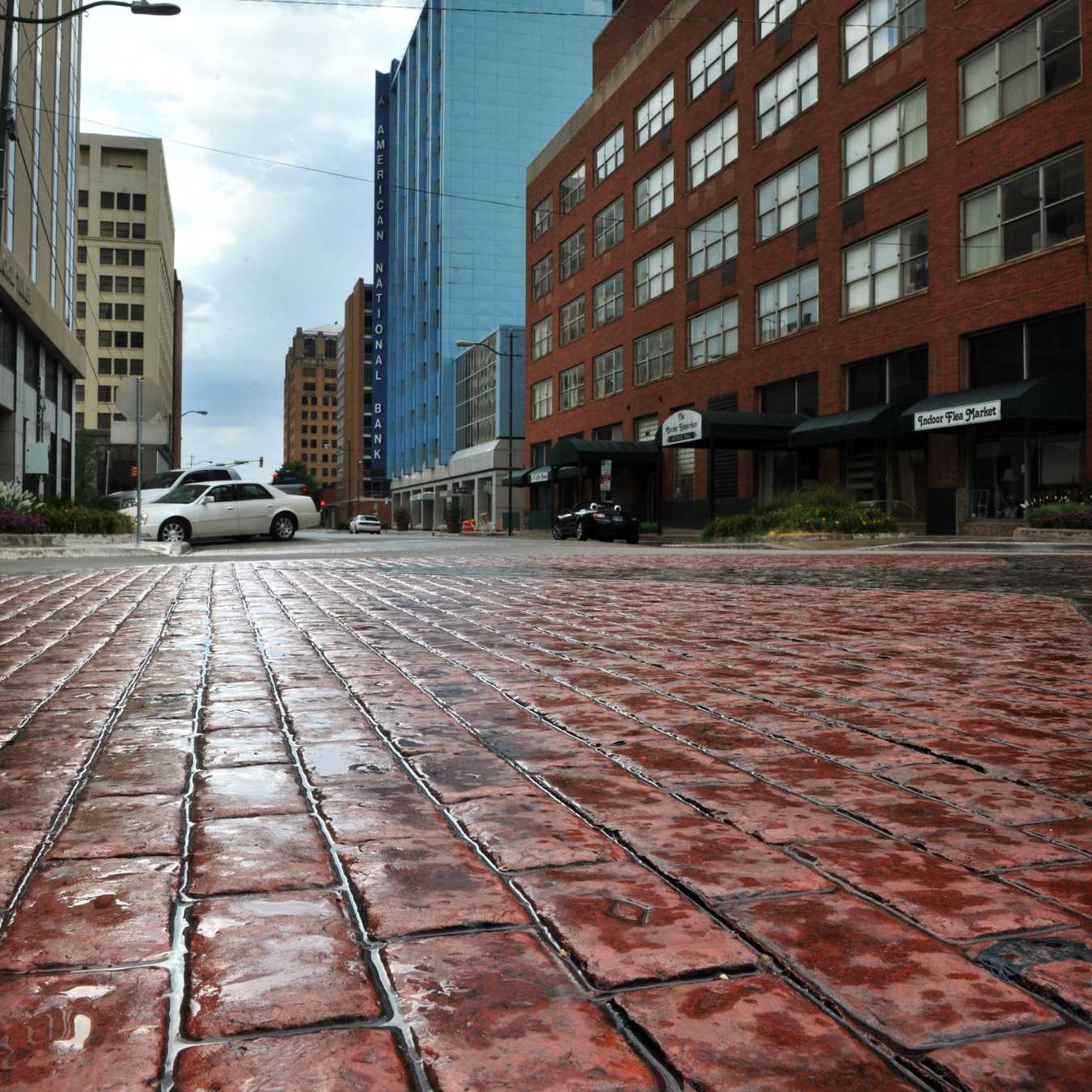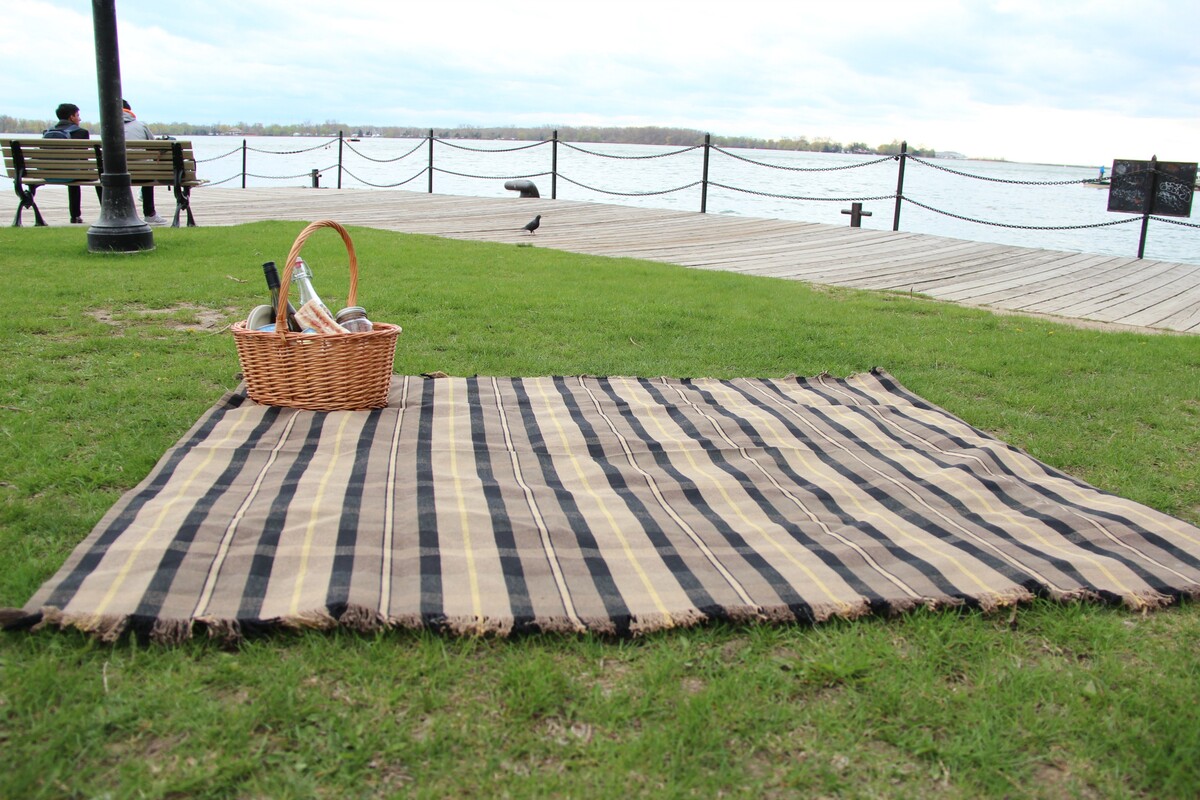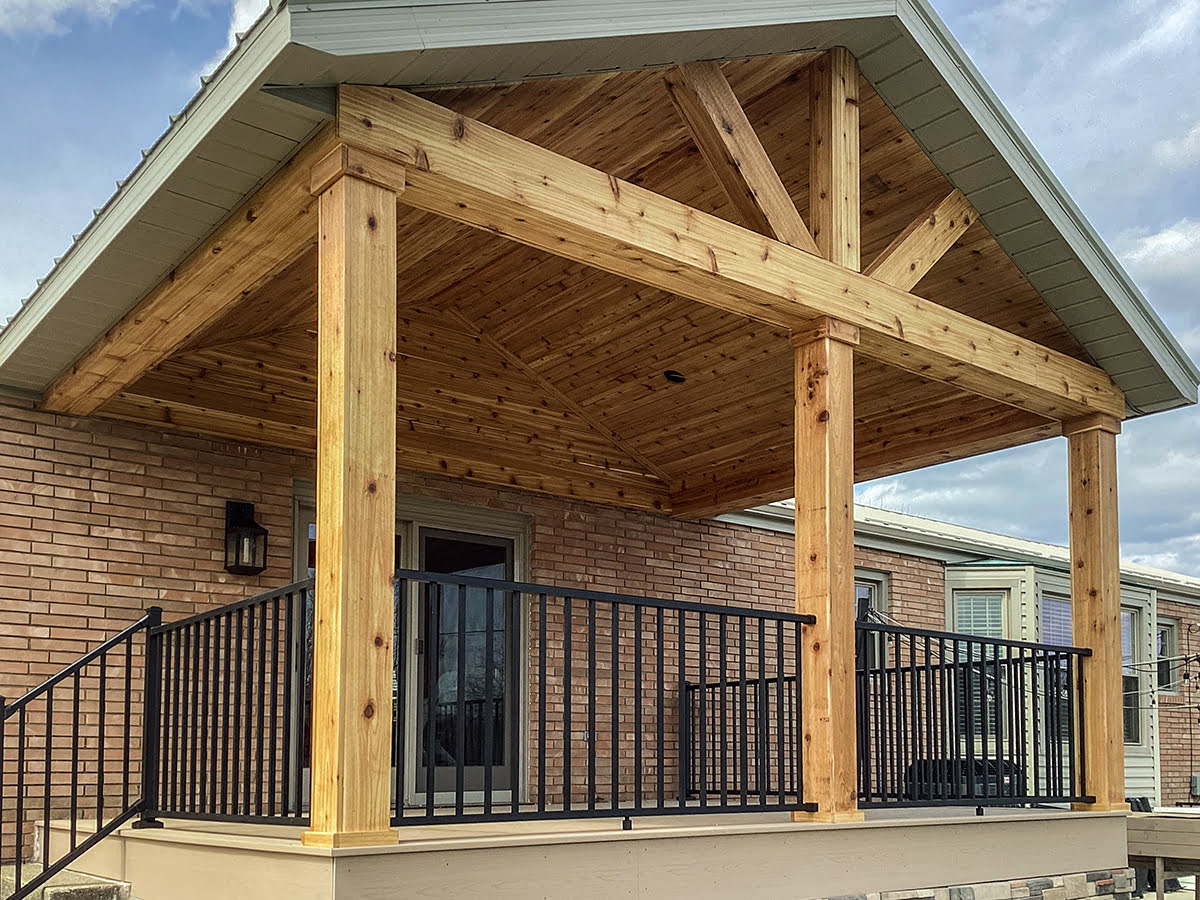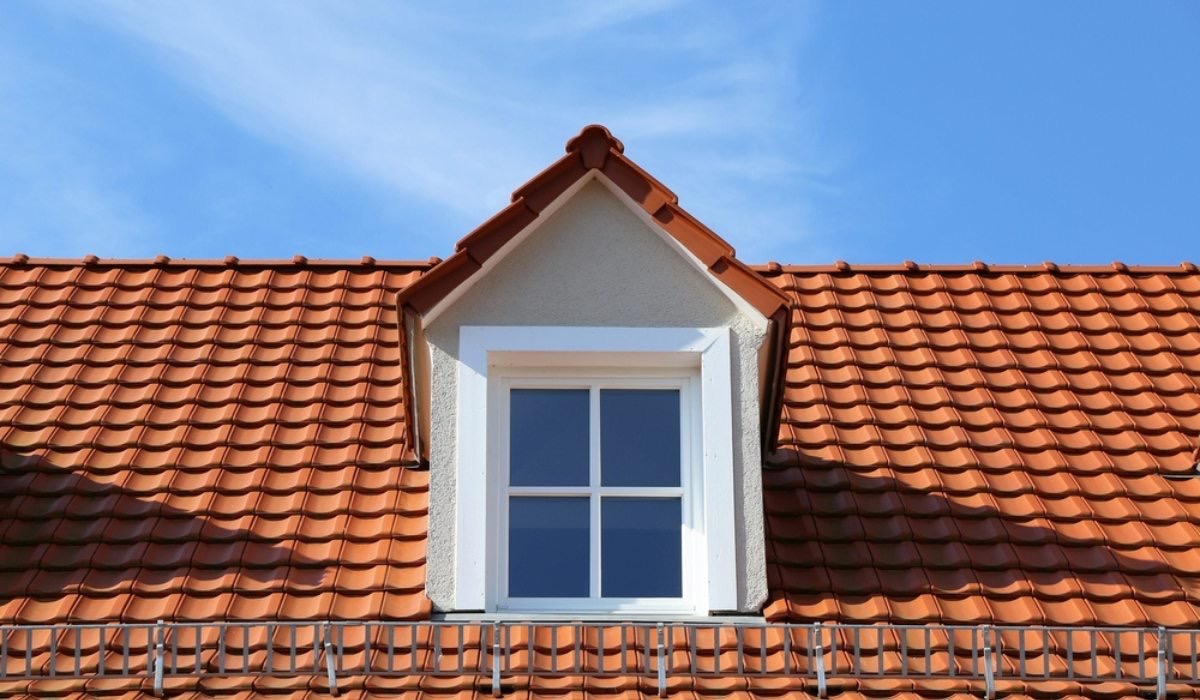Home>Construction & Tools>Building Materials>What Are Brick Roads Called


Building Materials
What Are Brick Roads Called
Modified: February 18, 2024
Discover the popular building materials used for brick roads and their benefits. Learn about the different types and characteristics of these durable pathways.
(Many of the links in this article redirect to a specific reviewed product. Your purchase of these products through affiliate links helps to generate commission for Storables.com, at no extra cost. Learn more)
Introduction
Brick roads, also known as cobblestone or setts roads, have a rich history and continue to be a popular choice for various applications. These roads are constructed using bricks or stone blocks, providing a durable and aesthetically pleasing surface for pedestrian walkways, driveways, and even some modern roadways. The distinctive appearance of brick roads adds a touch of timeless elegance to urban landscapes and historic districts, making them a sought-after choice for architects, urban planners, and homeowners alike.
The enduring appeal of brick roads can be attributed to their classic charm and exceptional durability. The use of bricks in road construction dates back centuries, and the tradition continues to thrive due to the numerous benefits offered by this time-honored material. From enhancing the visual appeal of a neighborhood to withstanding heavy traffic and adverse weather conditions, brick roads have proven their worth time and time again.
As we delve into the history, types, benefits, and maintenance of brick roads, it becomes evident that these enduring structures are more than just a functional means of transportation. They represent a fusion of artistry and engineering, embodying the craftsmanship of bygone eras while meeting the demands of modern society. Whether you're strolling along a quaint cobblestone street in a historic town or driving on a meticulously laid brick roadway, the allure and resilience of these roads are undeniable.
The following sections will delve deeper into the fascinating world of brick roads, shedding light on their evolution, versatility, and the enduring appeal that has made them a timeless symbol of enduring craftsmanship and enduring beauty.
Key Takeaways:
- Brick roads, also known as cobblestone or setts roads, have a rich history dating back to ancient civilizations, offering timeless elegance, durability, and environmental sustainability in urban landscapes.
- The versatility of brick roads, from cobblestone charm to interlocking paver practicality, provides enduring beauty, safety, and low maintenance, making them a beloved choice for transportation infrastructure.
Read more: What Is A Brick
History of Brick Roads
The history of brick roads can be traced back to ancient civilizations, where the use of bricks as a paving material revolutionized transportation infrastructure. The earliest known brick roads date back to the Indus Valley Civilization, where baked clay bricks were used to create well-organized street grids. The Romans also made significant contributions to the development of brick roads, constructing an extensive network of durable and meticulously engineered stone-paved roads across their vast empire. These roads, known as "pavimentum," were a testament to Roman engineering prowess and played a crucial role in facilitating trade, military movements, and the spread of Roman culture.
During the Middle Ages, brick roads became increasingly prevalent in Europe, particularly in urban centers and market towns. Cobblestone streets, characterized by their rugged and irregular surfaces, became synonymous with medieval European cities, adding a distinct charm to the urban landscape. The use of bricks and cobblestones in road construction continued to evolve, with advancements in craftsmanship and design leading to the creation of more refined and durable road surfaces.
In the 19th and early 20th centuries, brick roads experienced a resurgence in popularity, especially in the United States. With the advent of industrialization, mass-produced bricks became more readily available, leading to the widespread use of brick roads in urban and suburban areas. These roads not only provided a robust and visually appealing transportation infrastructure but also reflected the architectural and urban planning trends of the time.
Today, the legacy of brick roads lives on, with many historic districts and heritage sites preserving these enduring structures as a testament to their cultural and historical significance. The timeless appeal of brick roads continues to inspire contemporary urban design, with architects and city planners incorporating brick paving into modern streetscapes to evoke a sense of nostalgia and timeless elegance.
The evolution of brick roads mirrors the progression of human civilization, reflecting the ingenuity, craftsmanship, and cultural heritage of societies across the ages. From ancient civilizations to modern urban landscapes, brick roads have left an indelible mark on the history of transportation infrastructure, embodying the enduring legacy of human innovation and creativity.
Types of Brick Roads
Brick roads come in various types, each with unique characteristics and applications. Understanding the different types of brick roads provides valuable insights into their versatility and suitability for specific environments. Here are some notable types of brick roads:
-
Cobblestone Roads: Cobblestone roads are characterized by their irregularly shaped stones or bricks, often arranged in intricate patterns. These roads exude a rustic charm and are commonly found in historic districts and pedestrian-friendly areas. Cobblestone roads add a touch of old-world elegance to urban landscapes and are favored for their aesthetic appeal.
-
Interlocking Brick Pavers: Interlocking brick pavers are a popular choice for driveways, walkways, and patios. These versatile pavers feature interlocking edges that create a seamless and durable surface. They are available in various colors, shapes, and textures, allowing for creative design possibilities. Interlocking brick pavers are known for their ease of installation and ability to withstand heavy loads.
-
Herringbone Pattern Roads: The herringbone pattern is a classic layout for brick roads, characterized by bricks arranged in a V-shaped pattern. This pattern not only enhances the visual appeal of the road but also provides structural stability. Herringbone pattern roads are commonly used in urban settings, adding a touch of sophistication to the streetscape.
-
Basket Weave Pattern Roads: Basket weave pattern roads feature bricks arranged in a crisscross pattern, resembling the weave of a basket. This pattern creates a visually striking surface and is often used in pedestrian walkways and outdoor plazas. The interlocking nature of the bricks enhances the road's durability and load-bearing capacity.
-
Tumbled Brick Roads: Tumbled bricks undergo a tumbling process to achieve a weathered and aged appearance. Tumbled brick roads exude a timeless charm and are well-suited for historic preservation projects and heritage sites. The weathered texture of tumbled bricks adds character to the road surface, evoking a sense of nostalgia and authenticity.
-
Permeable Brick Roads: Permeable brick roads are designed to allow water to infiltrate the surface, promoting natural drainage and reducing stormwater runoff. These environmentally friendly roads help mitigate flooding and erosion while replenishing groundwater reserves. Permeable brick roads are increasingly embraced as sustainable solutions for urban stormwater management.
Each type of brick road offers distinct aesthetic and functional benefits, catering to diverse architectural styles and urban design requirements. Whether it's the timeless allure of cobblestone roads or the contemporary appeal of interlocking brick pavers, the versatility of brick roads continues to inspire innovative approaches to urban infrastructure and landscape design.
Benefits of Brick Roads
Brick roads offer a myriad of benefits that contribute to their enduring popularity and widespread use in various urban and suburban settings. From their timeless aesthetic appeal to their exceptional durability and environmental advantages, brick roads stand out as a versatile and sustainable choice for transportation infrastructure and urban design. Here are some of the key benefits of brick roads:
-
Timeless Aesthetic Appeal: One of the most notable benefits of brick roads is their timeless aesthetic appeal. The distinctive texture and rich color variations of brick surfaces add a touch of elegance and character to urban landscapes. Whether it's the rugged charm of cobblestone roads or the clean lines of interlocking brick pavers, brick roads enhance the visual appeal of streetscapes and pedestrian walkways, creating a sense of nostalgia and enduring beauty.
-
Durability and Longevity: Brick roads are renowned for their exceptional durability and longevity. When properly installed and maintained, brick surfaces can withstand heavy traffic, inclement weather, and the test of time. The robust nature of brick roads makes them a reliable choice for high-traffic areas, driveways, and public spaces, ensuring long-term performance and minimal maintenance requirements.
-
Versatility in Design: The versatility of brick roads allows for creative design possibilities, catering to diverse architectural styles and urban design concepts. From intricate patterns and herringbone layouts to custom color combinations, brick roads offer endless design options that can be tailored to complement the surrounding environment and architectural aesthetics.
-
Environmental Sustainability: Brick roads contribute to environmental sustainability through their permeable nature, which allows water to infiltrate the surface and replenish groundwater reserves. Permeable brick roads promote natural drainage, reduce stormwater runoff, and mitigate the risk of flooding and erosion, making them an eco-friendly choice for urban stormwater management.
-
Enhanced Safety and Traction: The textured surface of brick roads provides enhanced traction and skid resistance, contributing to improved safety for pedestrians and drivers. The natural grip offered by brick surfaces, especially in wet conditions, reduces the risk of accidents and enhances overall road safety, making brick roads a preferred option for walkable urban environments.
-
Historical and Cultural Significance: Brick roads hold historical and cultural significance, often serving as enduring symbols of heritage and craftsmanship. Preserving and incorporating brick roads into modern urban landscapes pays homage to the architectural traditions of the past, fostering a sense of connection to local history and cultural identity.
-
Low Maintenance Requirements: Despite their robust nature, brick roads have relatively low maintenance requirements compared to traditional asphalt or concrete surfaces. Routine cleaning and occasional repairs are typically all that's needed to keep brick roads in optimal condition, resulting in long-term cost savings and minimal disruption to daily activities.
The numerous benefits of brick roads underscore their enduring appeal and relevance in contemporary urban design and infrastructure planning. From their aesthetic allure and environmental sustainability to their practical durability and historical significance, brick roads continue to captivate and inspire, embodying the timeless marriage of artistry and functionality in the built environment.
Maintenance of Brick Roads
Maintaining the integrity and visual appeal of brick roads is essential to ensure their longevity and optimal performance. Proper maintenance practices not only preserve the aesthetic charm of brick surfaces but also contribute to their durability and safety. Here's a comprehensive overview of the key aspects of maintaining brick roads:
Regular Cleaning:
Routine cleaning is crucial to keep brick roads free from debris, dirt, and organic matter. Sweeping the surface regularly helps prevent the accumulation of debris, leaves, and other materials that can compromise the appearance and functionality of the road. Additionally, pressure washing can be employed to remove stubborn stains and maintain the vibrancy of the brick's color.
Weed and Moss Control:
Controlling weed growth and moss formation is essential to prevent vegetation from compromising the structural integrity of the road. Periodic inspection and removal of weeds and moss help preserve the evenness of the surface and prevent potential tripping hazards.
Repairs and Replacements:
Addressing damaged or sunken bricks promptly is vital to prevent further deterioration of the road. Replacing broken or worn-out bricks and re-leveling sunken areas helps maintain the smoothness and structural stability of the road surface. Properly executed repairs contribute to the overall safety and aesthetics of the brick road.
Joint Refilling:
Over time, the joints between bricks may require refilling to prevent shifting and maintain the interlocking integrity of the surface. Refilling joints with sand or specialized jointing compounds helps stabilize the bricks and prevent displacement, ensuring a uniform and secure road surface.
Sealing and Protection:
Applying a protective sealant to brick surfaces can enhance their resistance to staining, moisture penetration, and color fading. Sealants help prolong the lifespan of the bricks and simplify the cleaning process by creating a barrier against environmental elements.
Drainage Maintenance:
Ensuring proper drainage around brick roads is essential to prevent water accumulation and potential damage. Clearing drainage channels, inspecting and repairing drainage systems, and addressing any water-related issues contribute to the long-term structural integrity of the road.
Professional Inspections:
Periodic inspections by qualified professionals can identify potential issues early on and facilitate proactive maintenance measures. Professional assessments help detect signs of wear, damage, or structural instability, allowing for timely interventions to preserve the road's condition.
By adhering to these maintenance practices, property owners, municipalities, and preservation organizations can uphold the beauty and functionality of brick roads, ensuring that these enduring structures continue to enrich urban landscapes and historical districts for generations to come.
Conclusion
In conclusion, the enduring legacy of brick roads transcends mere functionality, encompassing a rich tapestry of history, craftsmanship, and timeless allure. From their humble origins in ancient civilizations to their continued relevance in contemporary urban design, brick roads stand as enduring testaments to human ingenuity and cultural heritage. The evolution of brick roads mirrors the progression of human civilization, reflecting the ingenuity, craftsmanship, and cultural heritage of societies across the ages.
The intrinsic charm and durability of brick roads have made them a beloved feature of urban landscapes, historic districts, and residential neighborhoods. Their timeless aesthetic appeal, coupled with their exceptional durability and environmental sustainability, positions brick roads as a versatile and sustainable choice for transportation infrastructure and urban design. Whether it's the rugged elegance of cobblestone roads or the clean lines of interlocking brick pavers, the versatility of brick roads continues to inspire innovative approaches to urban infrastructure and landscape design.
Furthermore, the maintenance of brick roads plays a pivotal role in preserving their integrity and visual appeal. Regular cleaning, weed and moss control, repairs and replacements, joint refilling, sealing and protection, drainage maintenance, and professional inspections are essential components of a comprehensive maintenance strategy. By adhering to these practices, property owners, municipalities, and preservation organizations can uphold the beauty and functionality of brick roads, ensuring that these enduring structures continue to enrich urban landscapes and historical districts for generations to come.
As we reflect on the enduring allure and resilience of brick roads, it becomes evident that these timeless structures are more than just pathways for transportation. They embody the intersection of artistry and engineering, weaving together the threads of history, culture, and urban design. Whether it's the cobblestone streets of a historic town or the meticulously laid brick roadways of a modern city, the enduring appeal of brick roads captivates the imagination and evokes a sense of nostalgia and enduring beauty.
In essence, brick roads are not merely conduits for movement; they are living testaments to the enduring legacy of human creativity and craftsmanship. As we continue to embrace the timeless allure and practical benefits of brick roads, we honor the traditions of the past while paving the way for a sustainable and aesthetically enriching future.
Frequently Asked Questions about What Are Brick Roads Called
Was this page helpful?
At Storables.com, we guarantee accurate and reliable information. Our content, validated by Expert Board Contributors, is crafted following stringent Editorial Policies. We're committed to providing you with well-researched, expert-backed insights for all your informational needs.














0 thoughts on “What Are Brick Roads Called”